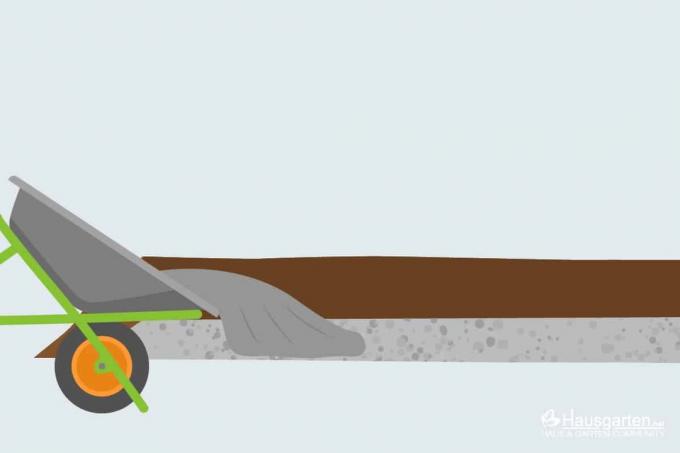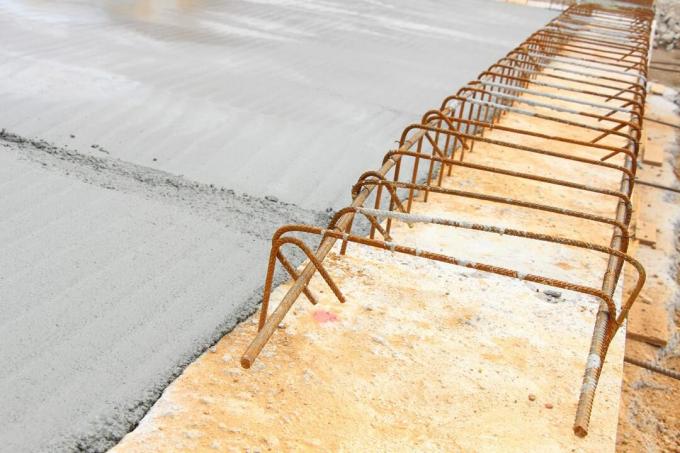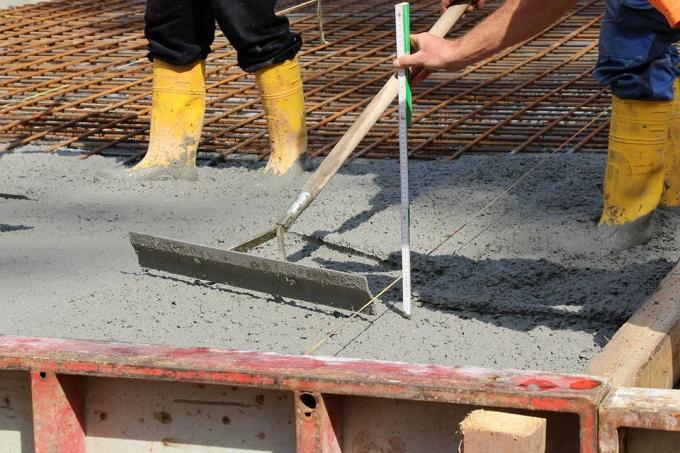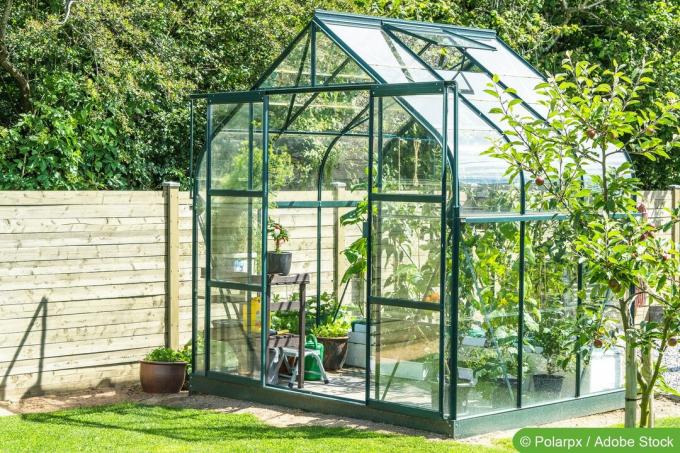

Table of contents
- depth of foundation
- Preparation - Instructions
- pour foundation
- garden gate
- corners
- reinforcement iron
- Hints
A foundation for garden walls must have a certain depth in order to be able to give the stones on it sufficient stability. Our guide shows what to look out for and how to proceed.
depth of foundation
The foundation for garden walls must be frost-proof in order to retain its stability even in winter. This also determines the depth of the base. Only from a depth of 80 centimeters does the ground have more than 0°C, even in winter. However, it is better to dig a pit of one meter. This ensures that the foundation is not damaged, even in very cold winters.

In addition, there is also enough space for a 20 centimeter thick layer of gravel, which is crucial for drainage.
Preparation - Instructions
Before the foundation can be poured, appropriate preparations must be made. The following guide shows how to do it:
1. set width
The foundation width is determined by the width of the stones. The trench should be dug 20 centimeters wider than the width of the stone. In order to comply with these dimensions, it is advisable to mark the course with wooden stakes and stretch a line between them. This allows a straight line to be followed when digging.
2. excavation
Due to the depth, manual digging with a spade is not recommended. It is easier, faster and less expensive to rent a mini excavator and carry out the excavation with it.
3. Fill in gravel

When the trench is dug a meter deep, the drainage layer can be filled in the form of frost-resistant crushed stone. A layer depth of about 20 centimeters is sufficient. In order to achieve this layer thickness, however, at least 30 centimeters must be filled in.
4. compacting
The gravel is compacted with a vibrating plate. If the layer thickness of 20 centimeters has not yet been reached, more gravel must be added and compacted again.
pour foundation
When the preparations are complete, the pouring of the foundation can begin.

The following steps are required for this:
- The pit is measured again to ensure the foundation is the correct depth.
- A tarpaulin laid out around the edges of the pit can prevent the concrete from contaminating the soil in the immediate vicinity or substrate from getting into the concrete.
- The concrete is mixed until a homogeneous mass is formed.
- The mass is slowly and evenly poured into the pit. Care should be taken to ensure that no air bubbles form.
- The top end must be leveled and smoothed to create a level base for the subsequent construction of the wall.
- After the concrete has been poured into the foundation, it must be compacted. This is also easier to do with a vibrating plate. This action should be taken while the concrete is still wet. Air bubbles are pressed out and the distribution is adjusted.
- In order to avoid unevenness, a board should then be placed and a spirit level checked to ensure that the foundation for the garden wall is really completely level.

garden gate
If the wall runs around the entire property and a garden gate is also to be integrated, a correspondingly large recess is simply left free when the foundation is dug out. Because pouring a concrete foundation under the gate is not necessary.
corners
There are two ways to make corners in the foundation. The first variant is to dig the trench in such a way that the drainage layer and concrete run around the corner as desired. This variant is sufficient for low garden walls, and is also extremely simple and practical. Because mini excavators and vibratory plates only have to be rented once. In addition, it is possible to complete a large part of the work in one day.

The second option is to build the foundation in sections. One side is poured and compacted. When the minimum load capacity is reached, two more trenches can be dug. Rebars are to be used at each end of the completed foundation to connect the new sections.
reinforcement iron
Reinforcement iron, also known as reinforcing iron, can be used when the foundation is subjected to greater loads. This is the case, among other things, if the garden wall is to be very high or if very large and wide stones are used. They serve as a reinforcement but also as a possible connection between two sections of the foundation. Therefore, among other things, they can be brought in to connect an already existing older section of the foundation with a new section. This is useful, for example, if a garden wall is to be extended.
The same applies to pouring another section, for example if the foundation is to go around the corner. To do this, holes are drilled into the hardened concrete and the rebars are inserted into the holes up to half their length. The fresh concrete can then be poured.

Hints
To ensure that the concrete sets gradually and that no cracks appear, a number of points should be taken into account both when laying out and after pouring the foundation for the garden wall. These are:
- The ideal temperature for casting and setting is between 15 and 20°C
- the optimal humidity is 85 percent
- From 30°C there is a risk of cracking in the first week
- if there is no rain in the first three days, the concrete must be moistened
- Alternatively cover with a vapour-impermeable film
- Foil must not touch concrete directly
- If frost occurs, use a heating cannon shortly after watering to avoid frost damage
- before excavating and laying the foundation, it should be checked whether a permit is required
 Home editorial office
Home editorial office
Learn more about Foundation

Garden sauna underground: Which foundation is necessary?
Having your own garden sauna can be a dream come true for many. In order for this to be preserved for a long time and not damaged, a suitable foundation must be prepared. There are different variants to choose from. This guide introduces you.

How to: concrete wooden posts in 4 steps
Wooden posts are the basic framework for various constructions in your own garden. Regardless of whether it is a larger object or a simple fence, stability or statics are relevant to the longevity of the project. Accordingly, the cornerstone is set with properly concreted-in posts.

Pile foundation: These are the costs for a single-family house
If you have decided in favor of a pile foundation when building your single-family house due to the soil conditions, you have several options for implementation. A price comparison is recommended. In addition, it is important that you find out whether floating or standing pile foundations are the better choice. Which method you choose depends not least on the condition of the floor and the planned size and architecture of the family home.

Drying time of foundations: how long does concrete dry?
The drying time of foundations is surprisingly long. Unlike with thin layers of concrete, the moisture can only escape from the large masses very slowly. But how long does the concrete dry and when can it be loaded?

Greenhouse Foundation: Setup & Building Tips
For the garden lover, his greenhouse is the ultimate. With the self-construction of your own greenhouse you create the best opportunities for your individual cultures grow and harvest vegetables, flowers or herbs less dependent on the season and the prevailing weather can.

Fence elements as a privacy screen: 17 variants
A privacy screen made of ready-made fence elements can be integrated particularly easily on the terrace or in the garden and immediately keeps unwanted eyes away. But what do you have to pay attention to with the individual variants? This overview shows advantages, disadvantages and special features.


